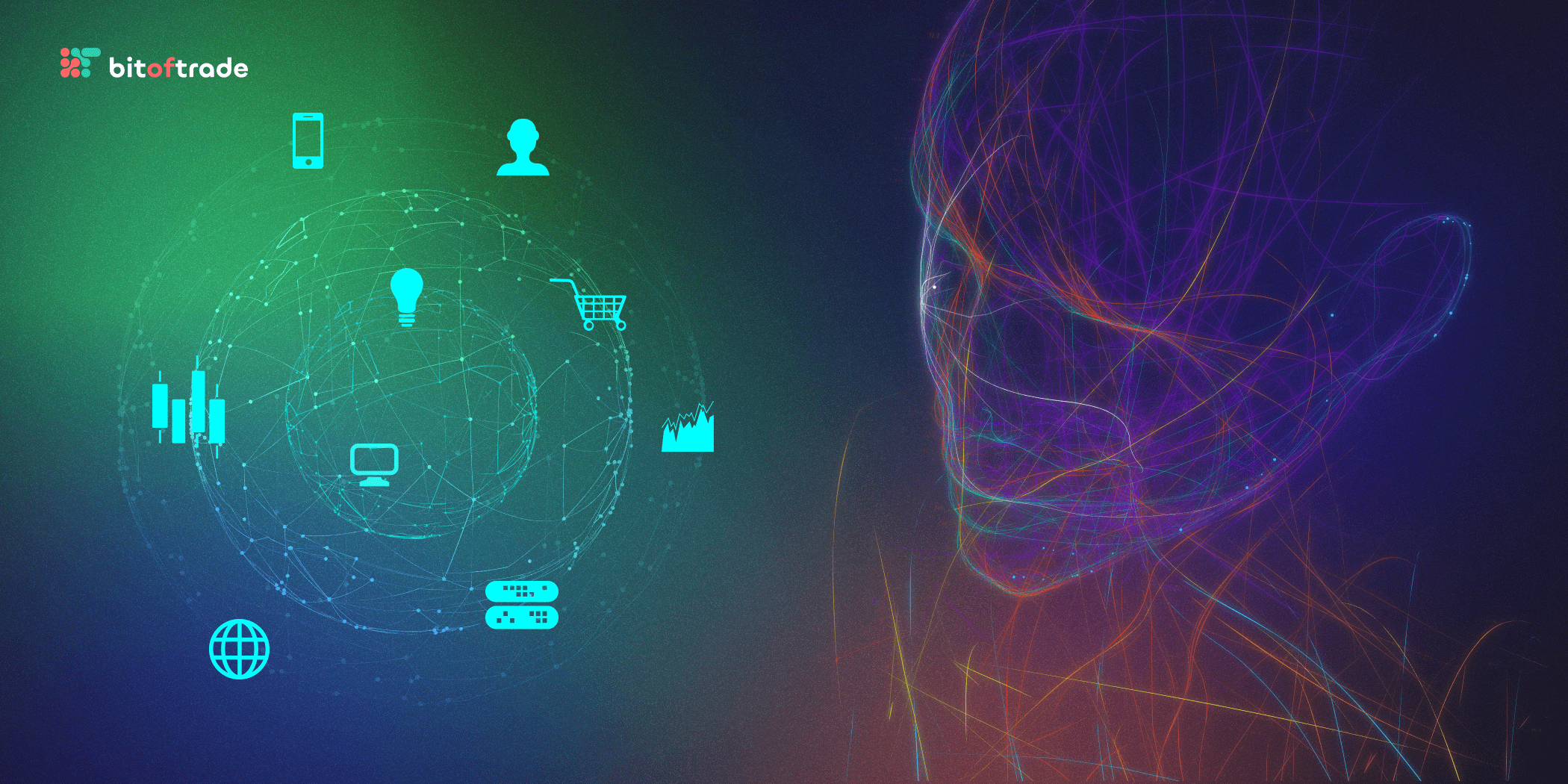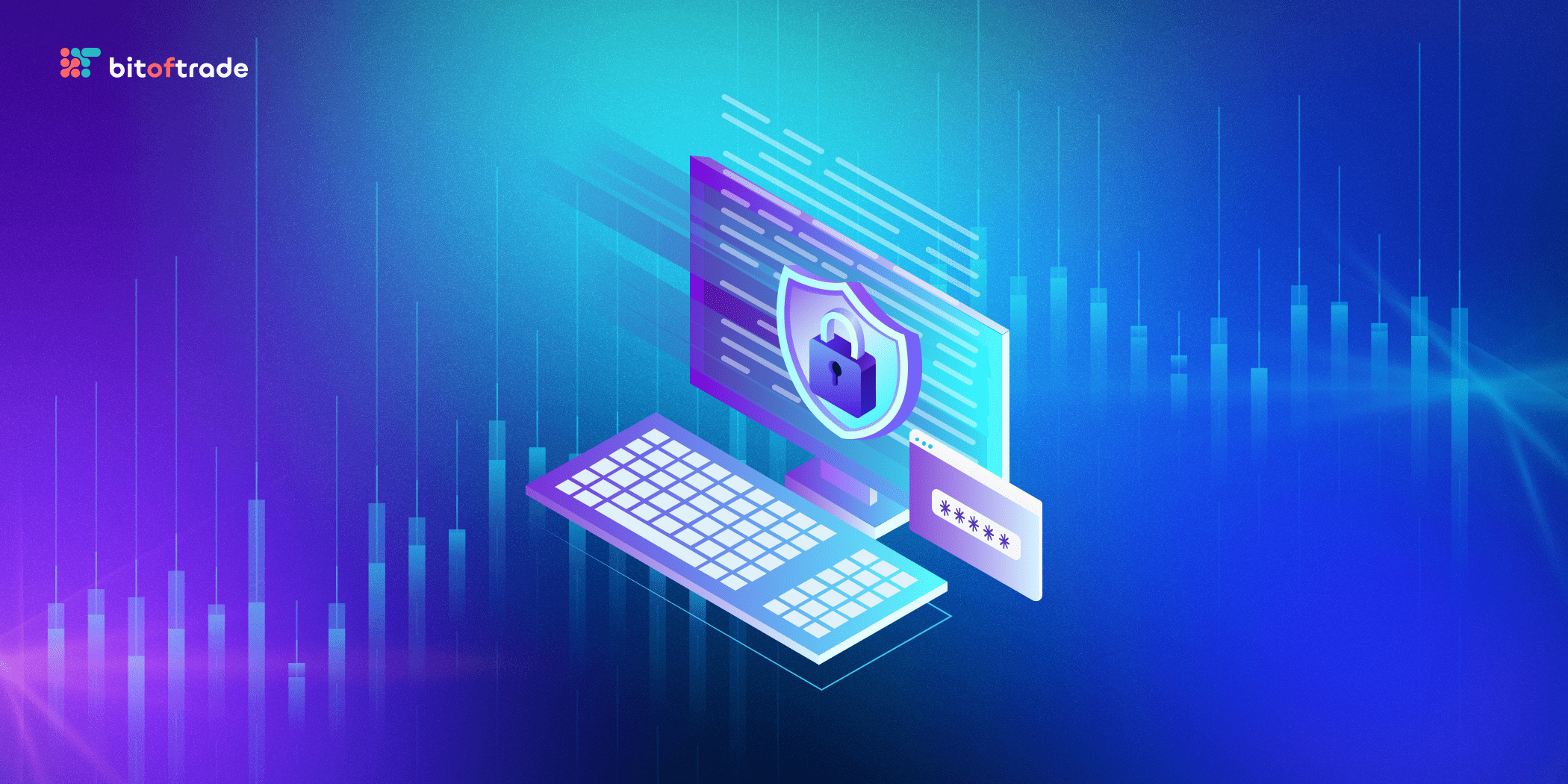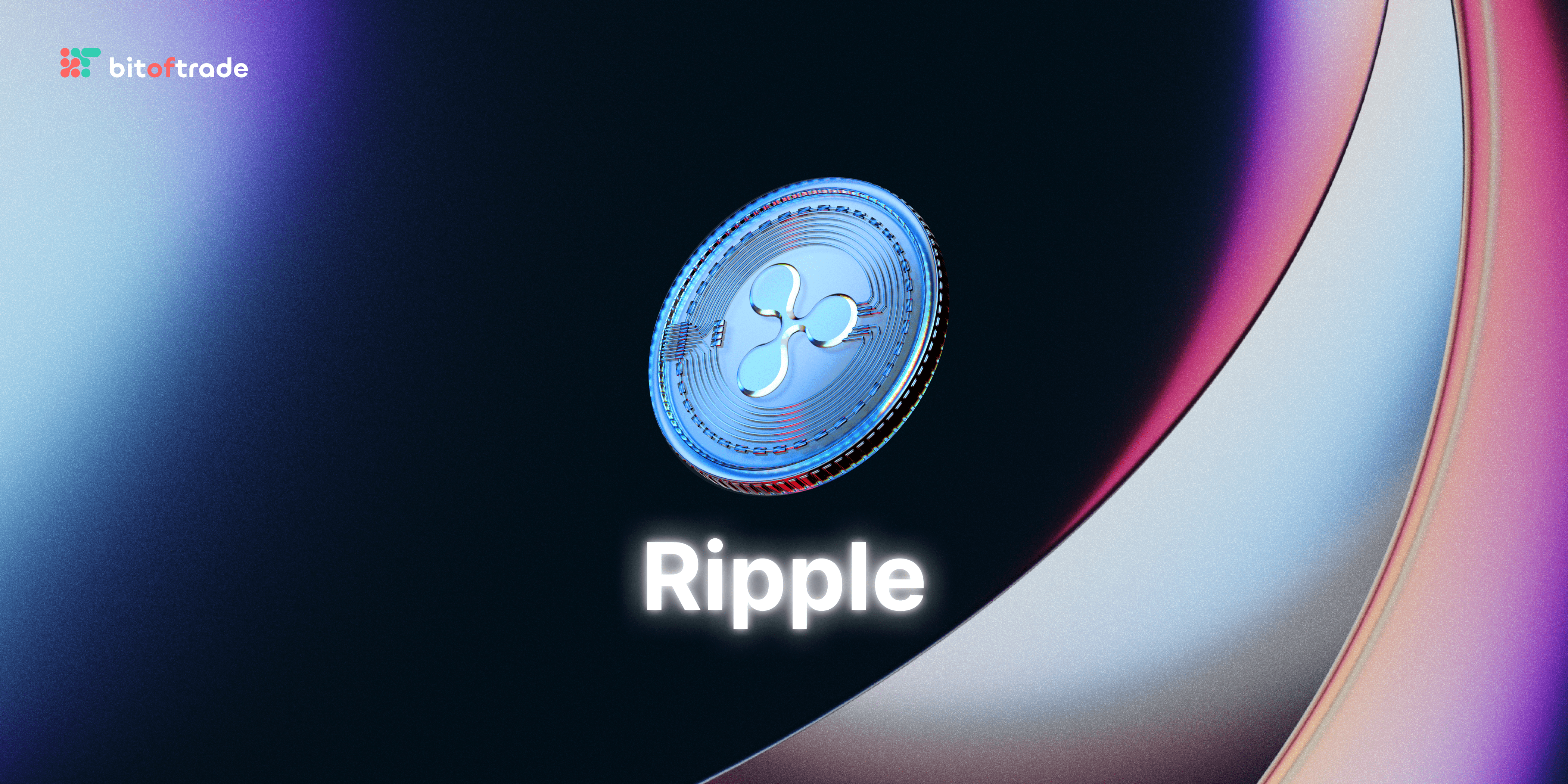Intro
Whether we realize it or not, artificial intelligence development had already impacted our lives prior to the day that the AI-powered GPT Chat blew up the Internet space. Google's search engine, conversational bots, smart assistants like Siri, and self-driving cars are just a few examples of how Artificial Intelligence (AI) is ingrained in our daily lives. By the way, Netflix recommendations are also based on AI.
We are utilizing these advancements, but this is just the tip of the iceberg. AI is undoubtedly here to stay, and those who develop AI-related projects have a tremendous opportunity to explore many domains of influence. For instance, artificial intelligence technologies are being implemented in citizen services, banking, government, industry, and logistics.
The most cutting-edge and exciting technologies of today are without a doubt artificial intelligence and blockchain. Can the marriage of blockchain and AI transform the way we communicate, live, work, and consume?
Today, we want to discuss the intersections of AI and blockchain, as well as the initiatives that are now fusing these two sophisticated innovative technologies.
Definition of Artificial Intelligence
The phrase ‘‘artificial intelligence’’ is used to refer to a variety of scientific disciplines with varying levels of sophistication, technology, and aim, but which all solve the problem of simulating some intellectual aspects of human behavior.
Although it is conventional to categorize AI into three forms, only one of them — narrow AI — is fully developed currently.
All the tools that are designed to carry out particular tasks and are constrained by their capabilities are considered narrow AI. Applications of weak or limited AI are currently pervasive.
Google Translate, picture recognition software, recommendation engines, spam filters, and Google's page-ranking algorithm are more instances of Narrow AI.
AI is performed in a variety of contexts:
Voice assistants like Siri and Alexa
Chatbots
Image and facial recognition apps
Self-driving cars
Recommendation engines used by Google, Meta and Spotify

General AI (AGI), usually referred to as Strong AI, is another type of AI. At this point in its evolution, it is anticipated that AI will be able to carry out every intellectual task that a person can. Natural language processing, machine learning, deep learning, and reinforcement learning are now being combined by the creators of AI services and products, although the desired outcome has not yet been reached.
The following conditions must be met for AI systems to advance from the Narrow level to the General level:
- Abstract thinking
- Cause and effect
- Common sense
- Transfer learning
Super AI is the next iteration of AI. In addition to being able to carry out mental operations that are only humanly possible, artificial superintelligence (ASI) is predicted to start evolving much like a real person. If humans ever create ASI, it will resemble a genuine person in every way, including having taste, emotions, and the capacity to make decisions.
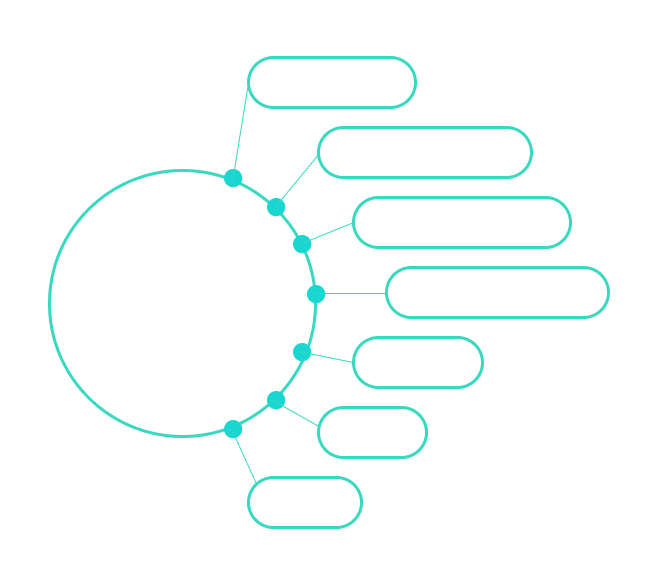
AI Use Case Examples
AI is presently being used by many companies. As an illustration, Meta implements post-filtering for users, recommends content, and tracks spam and advertising information using deep learning technology.
Google Translate is a well-known example of AI using language, as it relies on neural machine translation to carry out its operations.
Image analysis is another field of deep learning study. Companies like Apple have used computer vision algorithms in their apps for years. Face ID, an iPhone feature we use frequently, is an AI-based face recognition system.
And even while employing artificial intelligence has raised concerns about how the government and businesses are gathering data on us for control, there are some situations where using advanced AI technologies makes a lot of sense.
The field of medicine is one of those.
Healthcare AI Use Cases
There is a concept — medical imaging. It is a collection of AI tools that can examine MRIs, CT scans, x-rays, and more, helping recognize issues that a human specialist would miss.
It appears that a doctor's workload and lack of time are the biggest issues facing him or her in modern society. Deep learning can help in this situation. Researchers from Tulane University found that by evaluating tissue scans equally well or better than pathologists, AI can reliably detect and diagnose colorectal cancer.
AI medical imaging has been proven to be successful in detecting cancer, cardiac and pulmonary issues, neurological illnesses, pneumonia, fractures, and other diseases.
Recently, experts at Nagoya University in Japan created an AI system that enables the diagnosis of the lung condition idiopathic pulmonary fibrosis. Due to the highly invasive nature of the disease's diagnostic procedures, there is a possibility that the disease will worsen even before it is detected.
The screening tool developed by Japanese researchers has been found to be as accurate as a human specialist in fibrosis diagnosis without doing any harm to the afflicted organism.
It's crucial to emphasize that AI medical tools are developing and being utilized not only in wealthy nations with sustainable economic progress but also in African nations. For instance, deep learning programs in Zambia help clinicians identify diabetes and tuberculosis.
AI innovations arrive in Africa as startup concepts. For instance, a data science start-up initiative called minoHealth AI Labs is being developed in Ghana. This project uses convolutional neural networks to help diagnose illnesses like breast cancer, pneumonia, fibrosis, and hernias.
Remembering that less than 30% of medical institutions on the continent of Africa have access to dependable electricity will help you comprehend how fantastic and advantageous this is.
AI Road Traffic Management Use Cases
AI is being actively used in the development of smart city initiatives. How is road traffic management becoming altered by AI? Via the following areas of development:
Automatic distance recognition (ADR) uses a variety of sensors, including cameras, radars, and lasers, to measure the separation between a vehicle and an object in front of it. Some automakers are already using these smart technologies, including Tesla, Volvo, and Mercedes-Benz.
Smart Parking. By anticipating potentially busy regions, programs like Google Maps and others that use this technology help drivers avoid traffic jams.
These automated systems, which were first developed in 1950 for traffic signal regulation, have improved throughout recent years.
NoTraffic is arguably the top platform for traffic management. At intersections, the business embeds sensors and an edge processor to assess traffic and improve traffic signals. The movement of pedestrians, other vehicles, and other moving objects is also captured by NoTraffic's devices.
A wide range of AI techniques can increase road safety and even lower polluting gases in the atmosphere. The research654212(ANN1)_EN.pdf) of the European Union proves it.
AI Education
International organizations for culture and education as well as educational institutions are implementing AI technology.
In 2019, UNESCO published Artificial Intelligence and Education: Guidance for Policy-Makers. This essay fosters a widespread understanding of both the opportunities and challenges that artificial intelligence presents for education, as well as its implications for the fundamental skills required in the AI era.
The following important aspects support the advantages of using AI educational solutions:
While it would be practically difficult for a teacher to individually tailor the educational process for each student, AI-infused customized technology can.
Administrative activities can be automated by AI, ensuring that all students get timely feedback on their accomplishments and failures.
AI educational tools are available to students outside the classroom as tutors because the technology is available 24/7.
All students, regardless of their language proficiency, amount of training, or performance in school, can have access to resources thanks to AI. Educational programs have the capacity to engage multiple students simultaneously.
Let's look at some examples:
Thinkster Math is a math learning system driven by AI that blends the efforts of highly certified math teachers with machine-learning capabilities. The platform takes particular pleasure in its individualized approach to developing learning services.
Nuance created conversational AI, a form of speech recognition software. The primary function of Dragon, a transcribing application, is the ability to accomplish text work by speaking rather than writing, followed by the option of correction. It should be noted that this program is mainly meant for educators, as it simplifies delivering extensive comments on papers, research projects, and tests.
KidSense is an artificial intelligence educational tool for children, a smart engine based on speech data from about 150,000 children. Roybi's robots were created by KidSense and are designed to interpret children's speech, communicate with youngsters, and improve their small companions' speech and literacy.
Crossroads of Blockchain and AI
Blockchain & combo AI may find distribution in multidimensional commercial implications. The combination of AI and blockchain is a mix of an independent and secure distributed ledger system and a technology capable of processing massive amounts of data, managing risk, and forecasting the future.
The primary benefits of Blockchain and AI convergence are listed below.

Where can the combination of blockchain and AI produce outstanding results?
Cybersecurity
Smart cyber ecosystems that incorporate the technological complexity of AI and blockchain could provide enterprises, governments, and individuals with better secure software. AI can detect and analyze cyber dangers, whereas blockchain can provide data security and integrity.
Supply chain administration
A safe and transparent supply chain can be managed using blockchain. AI's mission is to optimize - to forecast future demand.
Industry of financial services
Blockchain technology may be used to assure transaction security and transparency, while AI can detect fraudulent activity quickly.
Decentralized marketplaces
Blockchain technology is used to establish a distributed ledger with no central authority, whilst AI can be used to improve the marketplace and provide purchasers with individualized recommendations.
Data management
While AI can improve performance by analyzing vast volumes of data, blockchain can provide secure and transparent storage for this data to be shared and accessed.
Authentication and identity verification
Face recognition and biometrics can be utilized with AI, and blockchain can provide secure and transparent ways to store this identity verification data.
Blockchain and AI Companies
The potential of blockchain and AI is enormous. By combining these technologies, we can create an ecosystem that is more efficient, transparent, and secure. AI can be used to analyze vast amounts of data stored on the blockchain, providing valuable insights and predictive analytics that have the potential to transform various areas.
The prospects for this combination may lead to new innovations in various sectors, including finance, supply chain management, and health care. Let’s see a few examples.
Alethea
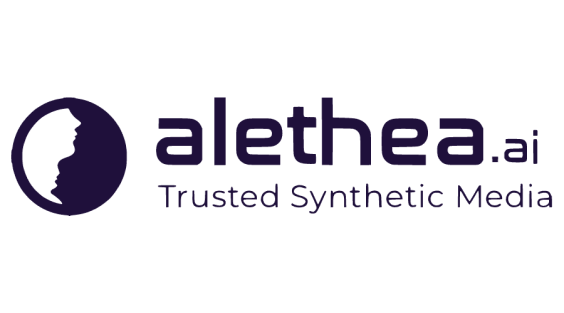
Alethea is an AI-centric blockchain project founded by Arif Khan and launched in 2019.
Having chosen Polygon as the blockchain basis of the project, Alethea launched generative AI Protocol powering a Noah's Ark metaverse. This metaverse could be one of many similar ones were it not for the introduction of Intelligent and Interactive NFTs (iNFTs).
An iNFT is an ERC-721 NFT that is powered by ERC-721 Intelligence Pod using the AI Protocol. AI Protocol's dApp mycharacter.ai allows users to create various iNFT personalities - set a visual component and character.
So, with the help of generative AI, Alethea aims to create a new class of smart NFTs, which can be trained with the help of AI (these avatars can evolve by consuming the data), earn money on them and use them to communicate with people inside Noah Ark and any other digital ecosystem as outlined in the Alethea AI Whitepaper
An intelligent NFT, according to the creators, has a body (its image), a soul (a “personality pod”), and a mind (measured in intelligence levels).
A “personality pod” is an ERC-721 asset that enables you to create AI-generated NFT personalities. The pod is a key component in creating a tokenized character that will evolve based on the nature of its personality.
Intelligence Levels is the way to develop iNFT within the protocol created by Aletheia. So, for each created NFT intellectual, 1 level is available at the start. At this stage, AI Services are not available to the smart avatar creator.
Climbing to the next step depends on the amount of ALI Tokens locked the iNFT owner. By increasing the intelligence of his avatar, the owner gets the opportunity, using AI Services, to train his character and, following the Train-to-Earn Rewards model, earn crypto.
Personality Legos let you personalize each character. Upgrading to new intelligence levels unlocks more advanced Personality Legos.
SingularityNET

SingularityNET seeks to provide a decentralized AI marketplace for decentralized AI applications (DApps). Currently, SingularityNET is developing its service on the Ethereum and Cardano blockchains.
The AI marketplace is a useful starting point for developers to list and monetize AI services and applications, as well as for users to interact with them.
The project's ideological foundation is to democratize AI research and development in this field, making AI more accessible to independent developers and users. SingularityNET is a free and open protocol.
The protocol development team has released the AI Publisher platform, which allows AI services to be published. As stated, portal publishers have access to powerful AI apps, beta testing tools, and AI usage metrics.
SingularityNET is based on the following elements:
Registry
The Registry is a smart contract, ERC-165-compliant decentralized database, used by AI service developers to provide details like descriptions or pricing information, contact details. Anything that allows you to learn more about the service or application.
Multi-party Escrow (MPE)
MPE is a smart contract for payment transactions. A smart contract performs two roles: it is used as a wallet for depositing and withdrawing and as a unidirectional atomic payment channel between AI service developers and users.
Daemon
Daemon is an off-chain sidecar proxy service that helps manage the processes of interaction with smart contracts, payments via interaction with the Multi-Party Escrow smart contract, validate
the user's signatures and confirm the success of the transaction.
In short, Daemon simplifies the developer's workflow by streamlining processes and allowing them to focus on developing AI applications and services.
Numerai

Numerai is a revolutionary decentralized hedge fund, as it is rightly called by many, combining the advantages of blockchain and AI, launched in 2015. Since its inception, the foundation has attracted tens of thousands of data scientists worldwide to build machine learning models to predict the stock market.
Weekly data scientists compete in a tournament, eliminating the shortcomings of traditional financial markets prediction models. Participants receive high-quality contributions for correct predictions. A trustless system of incentivization, powered by AI, rewards users with NMR, the hedge fund's native currency.
Numerai partisipant's market forecasting proved the effectiveness of machine learning algorithms when the S&P 500's, traditional hedge funds were outperformed in 2020. Numerai's hedge fund generated a 55% return, while the S&P 500's generated only a 16% return.
Richard Craib, developer of a cutting-edge hedge fund, explains the problem Numerai is solving:
“Once you have a model in finance that works, you hide it. You hide the techniques you used to build it. You hide the methods you used to improve your data. And most importantly, you hide the data. The financial incentive for secrecy is strong.”
Conclusion
We have considered specific cases of the implementation of artificial intelligence in various areas of life and projects that combine blockchain and AI, now, as a conclusion, we can turn to statistics to better imagine the size of the market and its prospects.
In two years, investment in AI companies has more than doubled, reaching $66.8 billion (about $210 per person in the US) in 2022, according to CB Insights research.
Grand View Research predicts that the AI media and entertainment industry could grow to $99.48 billion (about $310 per person in the US) by 2030.
In business, the process of AI adoption is going on. From 2017, when 20 percent of respondents reported adopting AI in at least one business area, to 2019, the number of respondents increased to 58 percent, according to research by consulting firm McKinsey.
Below you can see the most adopted AI use cases that McKinsey found in its research:

The latest Deloitte’s 2021 Global Blockchain Survey demonstrates the following areas of blockchain technology distribution:

In comparison, it becomes clear that blockchain and AI are designed to perform different tasks. But it is also clear that the combination of these two cutting-edge technologies will be a significant advantage in the areas identified by the respondents.
bitoftrade attempts to keep up with all the latest crypto and blockchain news. Check out more articles in the Blog, and don't miss to see our new great products:
Cross-Chain Messaging Protocol
Follow our social media to stay up to date with the latest all-in-one bitoftrade platform news:
